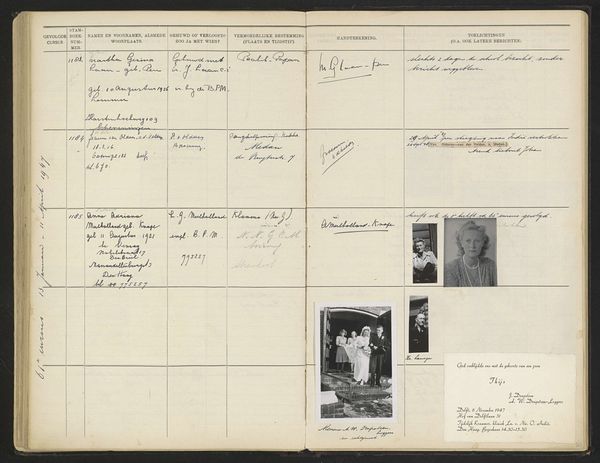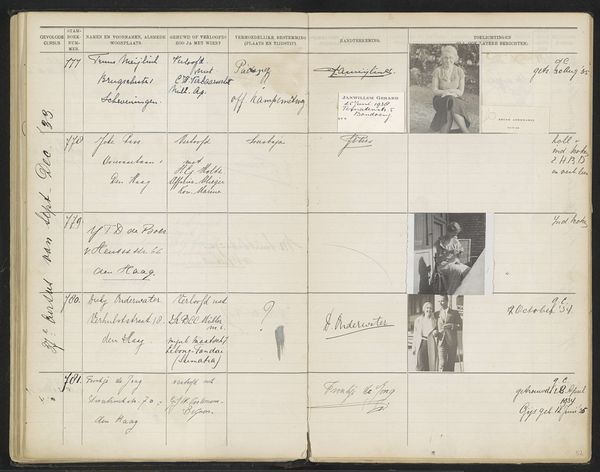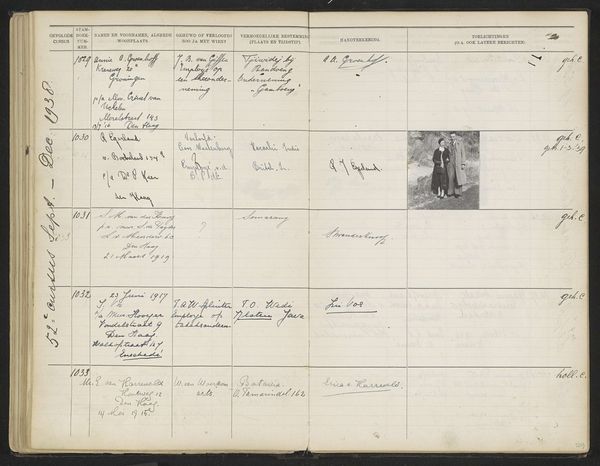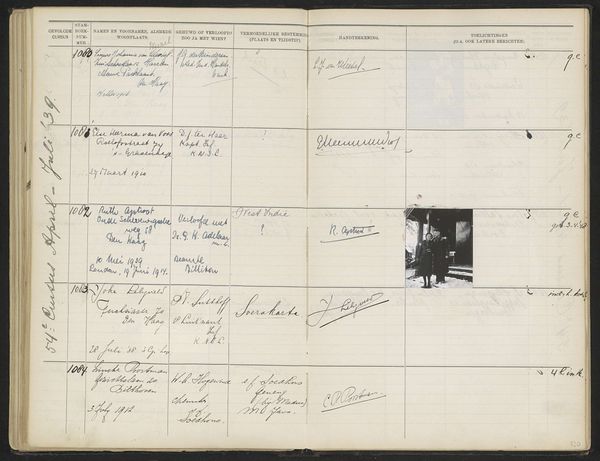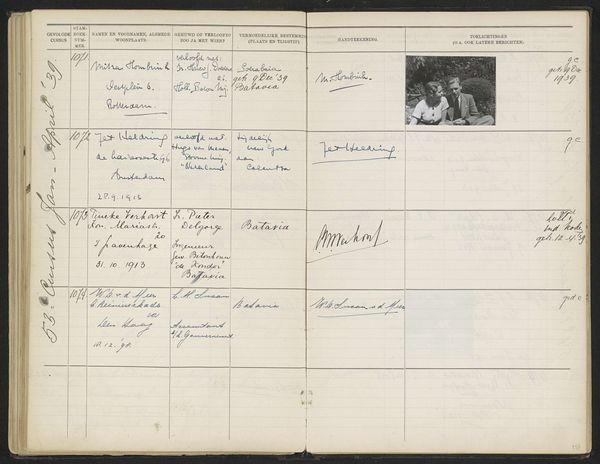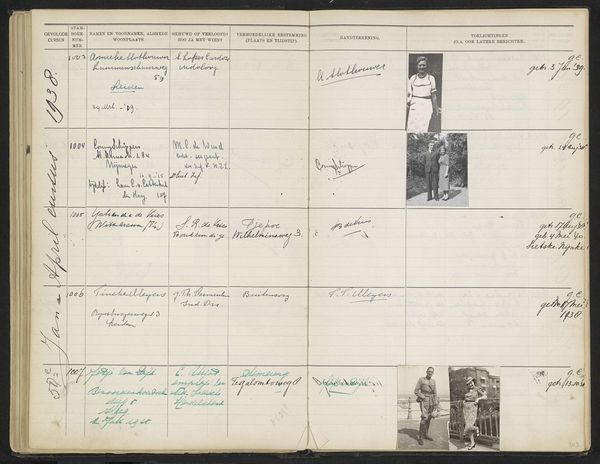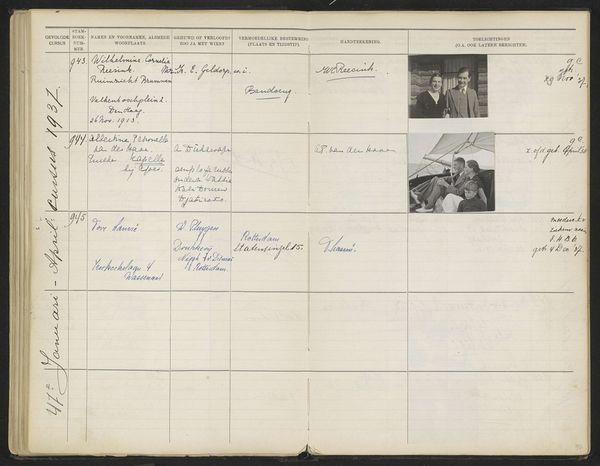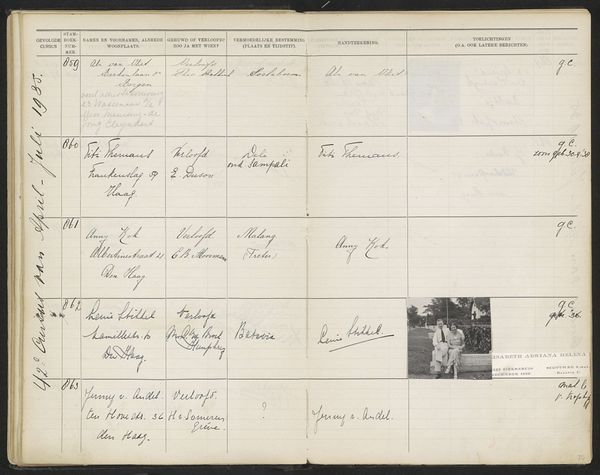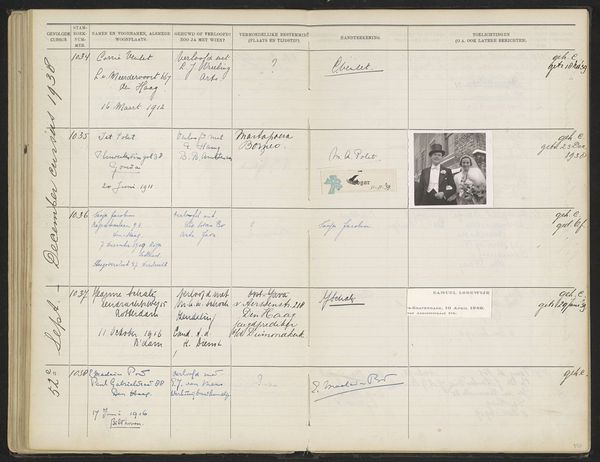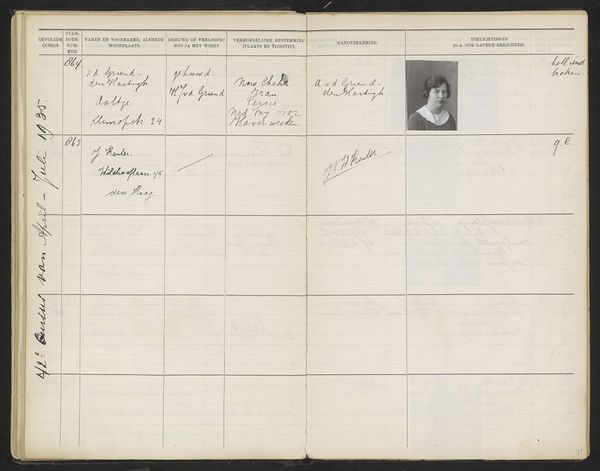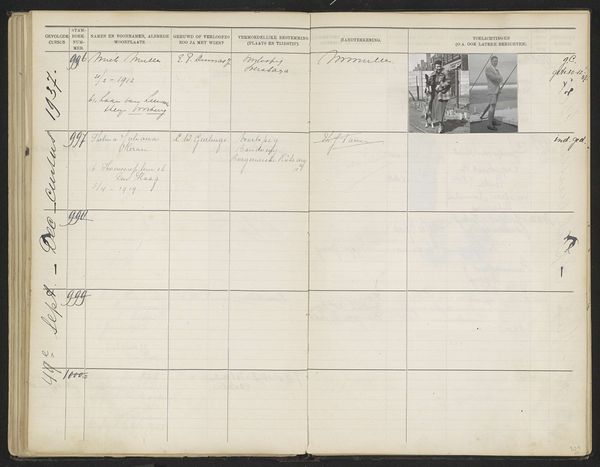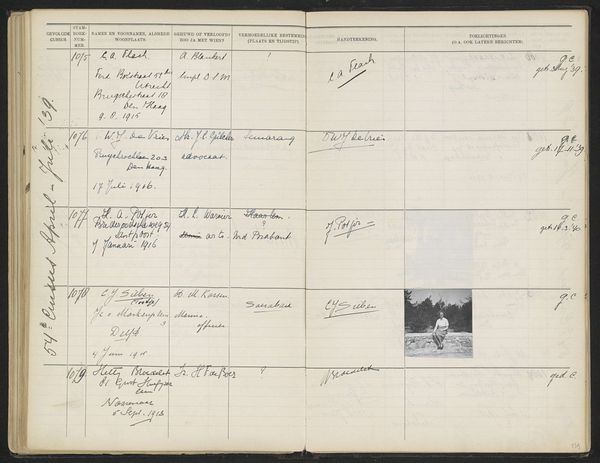
Blad 132 uit Stamboek van de leerlingen der Koloniale School voor Meisjes en Vrouwen te 's-Gravenhage deel II (1930-1949) Possibly 1940 - 1944
0:00
0:00
print, photography
#
portrait
# print
#
photography
#
academic-art
Dimensions: height 337 mm, width 435 mm
Copyright: Rijks Museum: Open Domain
Curator: Let’s turn our attention to "Blad 132 uit Stamboek van de leerlingen der Koloniale School voor Meisjes en Vrouwen te 's-Gravenhage deel II (1930-1949)," dating possibly from 1940-1944. It’s essentially a page from a register, featuring entries of young women in what appears to be a colonial training program. The page is filled with handwritten entries and each entry is accompanied by a portrait photograph. Editor: It has a wonderfully aged feel, almost like touching history itself. The handwriting and the small black and white portraits are particularly evocative; it makes me imagine their hopes, dreams, and everyday lives during that period, with just a single, square image and some hurried notes to anchor them in time. It’s very haunting and intimate. Curator: Absolutely. It is important to consider this as a document of institutional labor, examining the systems in place. Here we see clear divisions of work laid out formally through script and the reproduction of images by printing techniques—photography specifically. And what are the methods and materials here that underscore colonial social practices in a gendered context? Editor: What strikes me about that last photograph in the registry is this sense of an individual trapped, almost pressed into the page, their stories reduced to a few details, each meticulously aligned with others in the book as if these women are simply blanks that are to be similarly and identically completed, an industrial mindset. The frame here becomes less supportive and begins to squeeze the vitality out. What about the portraits’ arrangement and uniformity suggests these ideas about colonization and erasure of the self, do you think? Curator: I see the arrangement as an early data collation, placing value on reproducibility and function above all else. In photography, light-sensitive materials, processing chemicals, and printing presses were engaged. Moreover, consider the role of paper in the bureaucratic process – each sheet produced and handled under specific labor conditions, designed to control populations through record-keeping, especially colonial populations. Editor: Yes, each signature looks precise as well. Knowing now a bit about its place and materials it makes the work all the more weighty and charged! Curator: Precisely. Focusing on the intersection of method, materials and that precise record-keeping, it lets us connect these visual documents to the social engineering they represent. Editor: Indeed. What started as a melancholic glimpse has now revealed a grim understanding of the social landscape those young women occupied!
Comments
No comments
Be the first to comment and join the conversation on the ultimate creative platform.
